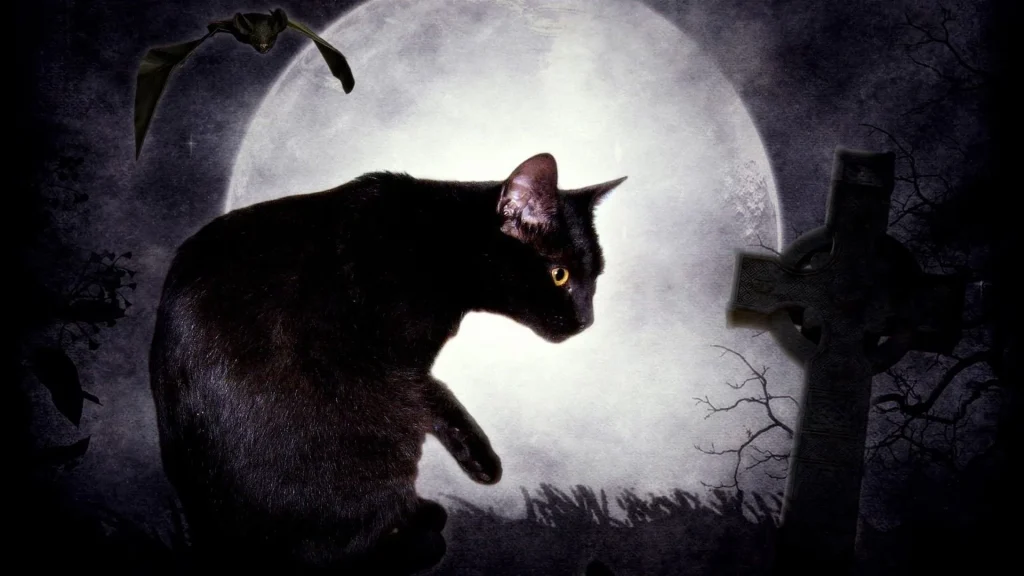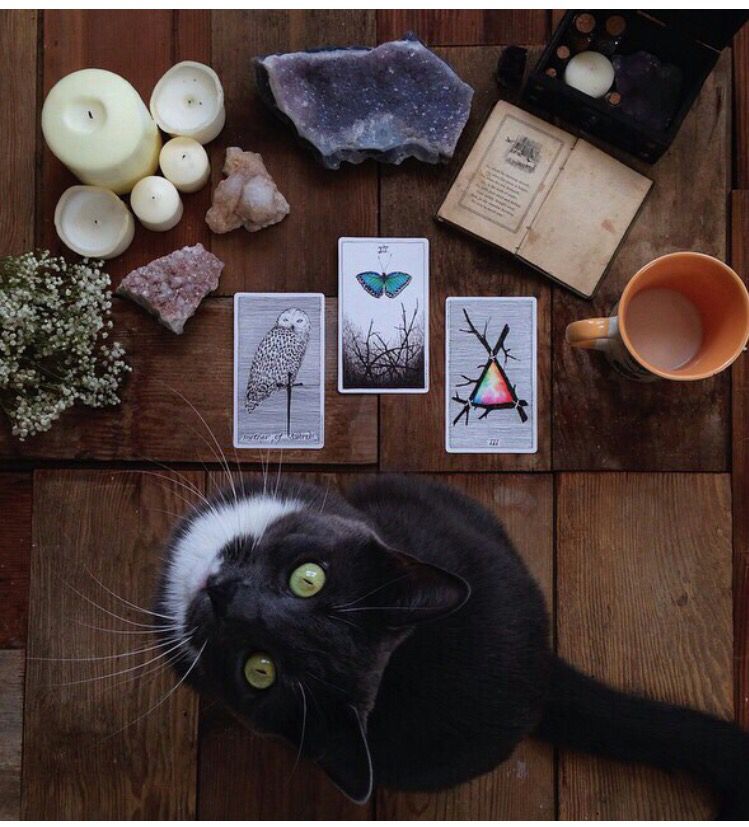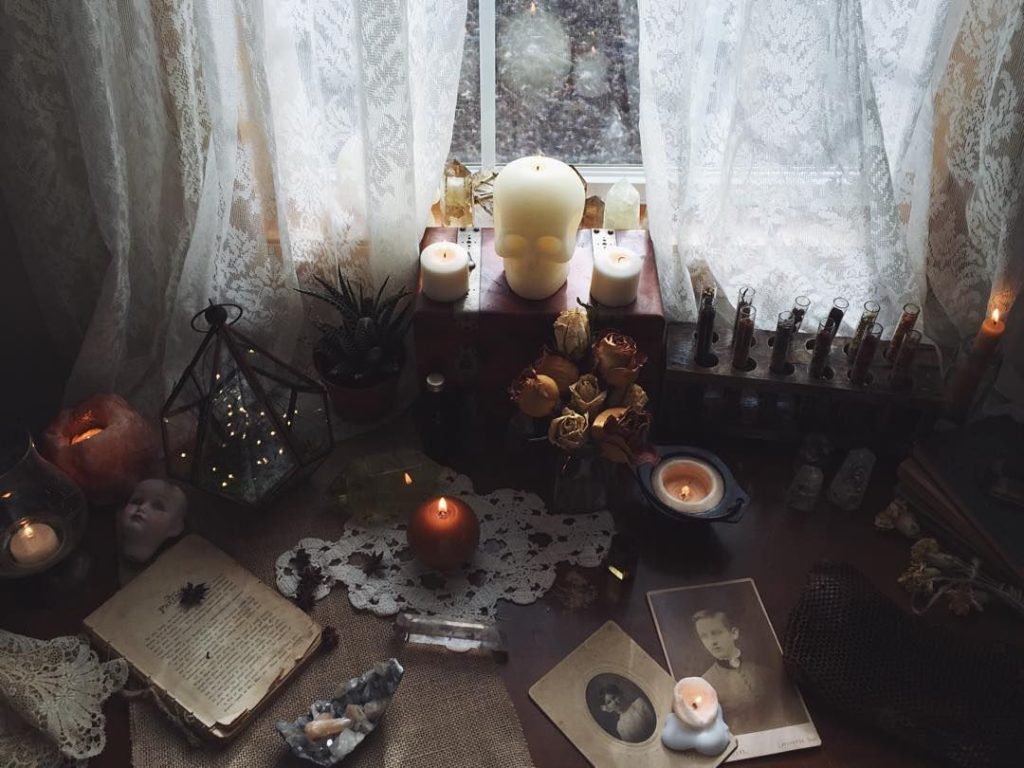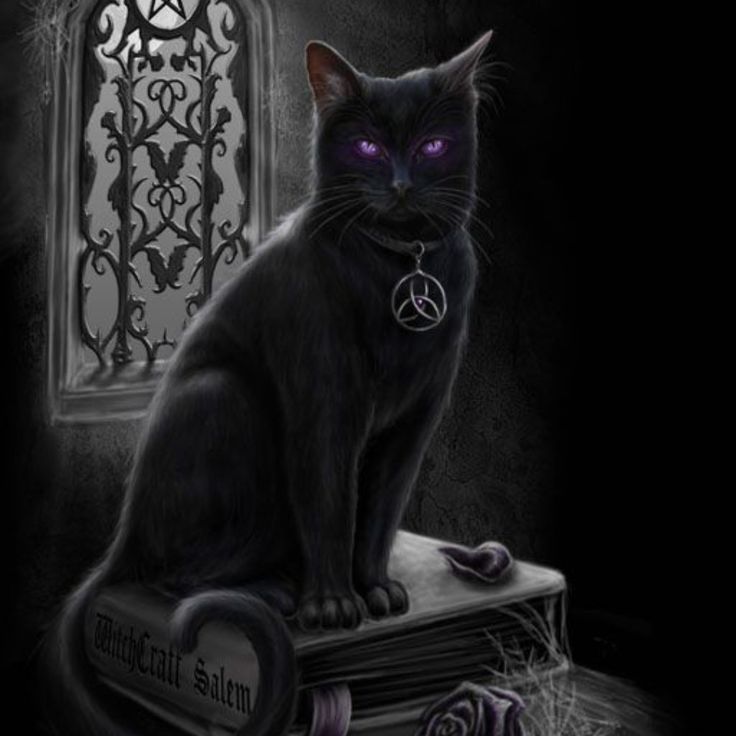Throughout history, folklore and urban legends have been filled with tales of cursed objects, haunted places, and eerie encounters. Among these chilling stories, the legend of the cursed cat stands out as a creature steeped in mystery and supernatural intrigue. In Witch Symbols, we explore the captivating tales surrounding the cursed cat, delving into its origins, alleged powers, and the enduring fascination it holds in the realm of the paranormal.
Origins of the Cursed Cat
The origins of the cursed cat legend can be traced back to a combination of cultural beliefs, superstitions, and historical events. Here are some key aspects that contribute to the origins of the cursed cat myth:
- Ancient Egypt: While ancient Egyptians revered cats as symbols of protection and good luck, there were also instances where cats were associated with curses. The Ebers Papyrus, an ancient Egyptian medical text, contains references to rituals meant to remove curses caused by cats. This duality of belief in both the positive and potentially negative aspects of cats may have contributed to the development of the cursed cat legend.
- European Witchcraft: In medieval Europe, particularly during the witch trials of the 15th to 18th centuries, cats, especially black ones, were often linked to witchcraft books. Some believed that witches could transform into cats to carry out their malevolent deeds. The association of black cats with witches and bad luck likely played a significant role in the idea of cursed cats.
- Cultural Variations: The concept of cursed cats is not limited to one culture but is found in various forms worldwide. For example, in Japanese folklore, the Nekomata is a cat-like creature associated with supernatural abilities and misfortune. Similarly, in some parts of Africa, there are beliefs that certain cats possess magical powers that can be used for both good and evil purposes. These cultural variations have contributed to the diversity of the cursed cat myth.
- Misinterpretation of Behavior: Cats’ natural behaviors, such as their hunting instincts, agility, and night prowling, can sometimes be misunderstood or misinterpreted as mysterious or eerie. For example, a cat’s sudden appearance in the darkness, its ability to pounce silently, and its reflective eyes can all contribute to the perception that they are otherworldly or bringers of misfortune.
- Historical Events: Throughout history, there have been instances where cats were associated with unusual events, accidents, or disasters. In some cases, these events were attributed to the presence of a cat, reinforcing the belief in cursed cats. However, these associations were likely based on superstition rather than concrete evidence.
- Folklore and Storytelling: Folklore and storytelling have played a significant role in shaping the image of cursed cats. Stories and legends passed down through generations often depict cats as mysterious or supernatural beings, contributing to the perpetuation of the myth.
It’s important to note that the origins of the cursed cat legend are complex and multifaceted. They reflect the interplay between cultural beliefs, historical events, and human psychology. While many people today no longer believe in the superstitions surrounding cursed cats, the myth continues to be a fascinating part of our cultural heritage and a testament to the enduring mystique of these remarkable animals.


Powers and Manifestations
The powers and manifestations attributed to cursed cats in various myths and legends are diverse and often reflect the cultural beliefs and superstitions of the societies in which these stories originated. Here are some common powers and manifestations associated with cursed cats:
- Bad Luck and Misfortune: Perhaps the most widespread belief is that cursed cats bring bad luck and misfortune to those who encounter them. This can range from minor inconveniences to major disasters. For example, if a black cat crosses your path, it’s often seen as an omen of impending trouble or bad luck.
- Witchcraft and Shape-Shifting: In European folklore, especially during the witch trials, it was believed that witches could transform into cats to carry out their nefarious deeds. This association led to the belief that black cats were particularly dangerous and could be witches in disguise.
- Harbingers of Death: Some legends depict cursed cats as omens of death. The presence of such a cat was thought to foretell a death in the family or community. In these stories, the cat often appeared as a spectral or ghostly figure.
- Supernatural Abilities: Cursed cats are often attributed with supernatural abilities, such as the power to speak human languages, manipulate the dead, or control the elements. In Japanese folklore, the Nekomata is known for its ability to speak and manipulate the dead using its forked tail.
- Curse-Bearing: Cursed cats are believed to carry curses themselves. Those who come into contact with these cats may become afflicted with curses or misfortunes. To remove the curse, various rituals or offerings might be required.
- Mysterious Disappearances: In some legends, cursed cats are said to vanish mysteriously, only to reappear when something ominous is about to happen. Their ability to appear and disappear at will adds to their enigmatic nature.
- Guardians of the Underworld: In some cultures, cats, including cursed cats, were believed to have a connection to the spirit world and were seen as guardians of the underworld. They were thought to guide souls to the afterlife or protect the living from malevolent spirits.
- Nighttime Hauntings: Cursed cats are often associated with haunting nighttime experiences. They may be seen prowling in the dark, their eyes glowing eerily, which contributes to their supernatural reputation.
- Manipulators of Fate: Some legends suggest that cursed cats have the power to manipulate a person’s fate. They may alter the course of events or interfere with an individual’s destiny in unpredictable ways.
It’s important to emphasize that these powers and manifestations are rooted in folklore, mythology, and superstition rather than reality. Modern scientific understanding dismisses the notion of cats possessing supernatural abilities or being agents of bad luck. In reality, cats are simply animals with their own unique behaviors and characteristics, which have been misinterpreted and exaggerated over centuries to create the captivating and sometimes ominous image of the cursed cat in our cultural imagination.
Legends and Haunting Tales
Legends and haunting tales about cursed cats are prevalent in various cultures around the world. These stories often serve to explain unusual or unfortunate events and have been passed down through generations. Here are a few intriguing examples:
- The Curse of the Cat of Killakee: One of the most famous cursed cat legends is associated with the Killakee House in Dublin, Ireland. In the 1960s, a black cat named “The Phantom” was said to haunt the house, which was already known for its mysterious occurrences. Those who encountered the cat reportedly suffered from bad luck and accidents. The cat was believed to be the spirit of a woman who had been accused of witchcraft and buried on the property. The story inspired numerous books and films.
- The Bell Witch: In American folklore, the Bell Witch legend tells of a malevolent spirit that tormented the Bell family in Tennessee in the early 19th century. The spirit was said to take the form of a black cat and a dog, among other manifestations. The Bells believed the spirit was responsible for various misfortunes, including physical attacks on family members. This chilling tale has become a classic example of a haunted cat in folklore.
- The Nekomata of Japan: As mentioned earlier, Japanese folklore features the Nekomata, a supernatural cat with two tails. Nekomata were believed to be able to speak human languages and control the dead. They were often portrayed as malevolent creatures that could bring misfortune and chaos. Stories of Nekomata haunting households and causing harm to humans are common in Japanese folklore.
- The Cat Sith of Celtic Mythology: In Celtic mythology, the Cat Sith was a large, spectral black cat with a white spot on its chest. It was believed to have the power to steal souls from the dead before they could reach the afterlife. To prevent this, people would leave out saucers of milk for the Cat Sith on the night of Samhain (Halloween). If the Cat Sith was not satisfied with the offering, it might bring misfortune to the household.
- The Cheshire Cat: While not inherently cursed, the Cheshire Cat from Lewis Carroll’s “Alice’s Adventures in Wonderland” is a famous literary character known for its eerie grin and ability to appear and disappear at will. Its mysterious and unsettling presence in Wonderland has made it a memorable figure in literature and adaptations.
These legends and tales often blend elements of folklore, superstition, and the supernatural, creating an aura of mystery and intrigue around cursed cats. While they make for captivating stories, it’s essential to remember that these are myths and not representative of the true nature of cats. In reality, cats are ordinary animals with their own unique behaviors and characteristics, and they should not be feared or associated with curses based on these age-old stories.


Cultural Significance and Symbolism
The cultural significance and symbolism of the cursed cat vary across different societies and time periods. While cursed cats are often associated with negative connotations, they also hold unique cultural and symbolic meanings in various contexts. Here are some aspects of the cultural significance and symbolism of the cursed cat:
- Superstition and Fear: In many cultures, the cursed cat, especially the black cat, has been associated with superstition and fear. These beliefs often stem from historical associations with witchcraft and bad omens. People would avoid black cats or consider them bad luck, leading to the belief that encountering one could bring misfortune.
- Protection and Guardianship: Contrary to the negative connotations, cats have also been seen as protectors and guardians in some cultures. In ancient Egypt, cats were revered as symbols of protection and were believed to ward off evil spirits. This dual role as both a bringer of misfortune and a guardian highlights the complexity of the cat’s symbolism.
- Independence and Freedom: Cats are known for their independence and self-reliance. In some cultures, they symbolize freedom and self-sufficiency. This aspect of their symbolism is seen in their ability to roam freely and adapt to various environments, which has led to associations with resilience and self-reliance.
- Mystery and Enigma: Cats’ behaviors, such as their ability to move silently, their keen senses, and their independent nature, contribute to their image as mysterious and enigmatic creatures. This sense of mystery has led to their use as symbols in literature, art, and popular culture.
- Feminine Energy: Cats, particularly in ancient cultures, have often been associated with femininity and the feminine principle. The grace and elegance of cats have inspired artistic depictions of female deities and goddesses with feline attributes.
- Magic and the Occult: Cats have long been associated with magic and the occult due to their mysterious nature and their presence in ancient rituals. In some belief systems, they are considered familiars to witches or possess magical powers themselves.
- Symbol of Adaptability: Cats’ ability to adapt to various environments and situations has led to their symbolic association with adaptability, flexibility, and survival. Their ability to land on their feet after a fall also symbolizes resilience and the ability to bounce back from adversity.
- Positive Folklore: While negative folklore about cursed cats exists, there are also positive tales and beliefs about cats in various cultures. For example, in Japanese folklore, the “Maneki-neko” or “beckoning cat” is a common symbol of good fortune and prosperity.
It’s important to note that the cultural significance and symbolism of the cursed cat have evolved over time and can vary widely from one culture to another. While some societies continue to hold superstitions about black cats and cursed cats, many people today view cats, regardless of their color, as beloved companions and symbols of mystery, independence, and resilience. Ultimately, the symbolic meaning of the cat is a reflection of the cultural beliefs and values of the society in which it is found.
Signs That a Cat Might Be Cursed
The idea of cursed cats is rooted in superstition, folklore, and mythology rather than reality. However, if you’re curious about signs that a cat might be considered “cursed” in the context of superstition or folklore, here are some common superstitions associated with cats:
- Black Fur: In many superstitions, black cats are often seen as a sign of bad luck or curses. If you believe in such superstitions, encountering a black cat, especially one that crosses your path, might be considered an ominous sign.
- Odd Behavior: In folklore, cats that exhibit strange or unusual behavior may be seen as cursed. This could include hissing or growling at seemingly invisible entities, staring intensely at nothing, or acting in ways that are perceived as eerie.
- Unexplained Disappearances: In some legends, cursed cats are said to vanish mysteriously, only to reappear when something ominous is about to happen. If a cat frequently disappears and reappears under mysterious circumstances, it might be interpreted as a sign of bad luck.
- Bringing Unwanted Gifts: Cats are natural hunters, and they may bring home prey as “gifts” to their owners. In some superstitions, this behavior is interpreted as a bad omen, especially if the prey is considered symbolic of misfortune.
- Unexplained Accidents: If a series of accidents or misfortunes occurs in the presence of a cat, particularly if they seem to happen in succession, it might lead to the belief that the cat is cursed.
- Illness or Death: In some superstitions, cats that become suddenly ill or die without an apparent cause may be considered cursed. Their illnesses or deaths may be seen as a reflection of their supernatural status.
- Dreams and Nightmares: Dreams involving cats, especially ominous or disturbing dreams, have been linked to superstitions about cursed cats. Some believe that dreaming about a cat can foreshadow bad luck or misfortune.
It’s crucial to reiterate that these signs are based on superstitions and folklore rather than objective reality. Cats are ordinary animals with their own unique behaviors and characteristics, and any unusual behaviors or events should not be interpreted as signs of curses. Modern science and reason have debunked such beliefs, and it’s important to treat cats with kindness and care, rather than associating them with superstitions or curses.


Exploring Rational Explanations
The concept of cursed cats and their association with bad luck or supernatural occurrences can be explained rationally by examining various factors, including psychology, perception, and cultural influences. Here are rational explanations for the belief in cursed cats:
- Confirmation Bias: Human minds are naturally inclined to seek patterns and associations, even where none exist. When people believe that a cat is cursed or brings bad luck, they may subconsciously focus on and remember negative events or coincidences that occur in the presence of the cat. This confirmation bias reinforces their belief in the curse.
- Cultural Influence: Cultural beliefs and superstitions play a significant role in shaping our perceptions and behaviors. If a culture has a long history of associating black cats with bad luck or curses, individuals within that culture are more likely to adopt and perpetuate these beliefs.
- Misinterpretation of Normal Behavior: Cats exhibit various natural behaviors that can be misinterpreted as mysterious or ominous. For example, a cat’s hunting instincts may lead it to appear suddenly in the dark or to pounce silently, which could be misconstrued as supernatural abilities.
- Selective Memory: People tend to remember unusual or negative events more vividly than routine occurrences. If something unfortunate happens while a cat is present, it can lead to the belief that the cat caused the bad luck, even if there is no causal connection.
- Historical Events: In the past, there may have been instances where unusual or unfortunate events coincided with the presence of a cat. These events could have contributed to the belief in cursed cats, even though there is no scientific basis for such beliefs.
- Witch Trials and Hysteria: During periods of witch trials and hysteria, cats, especially black ones, were often associated with witches and the supernatural. This historical context contributed to the belief that cats could be cursed or associated with malevolent forces.
- Fear of the Unknown: Cats are known for their independence and enigmatic behaviors. Fear of the unknown or things that cannot be easily explained can lead people to attribute mysterious qualities to cats.
- Social Influence: Beliefs about cursed cats can be reinforced by the social environment. If a person’s friends, family, or community share the belief in cursed cats, they are more likely to adopt and perpetuate that belief.
- Psychological Comfort: In some cases, attributing negative events to a cursed cat can provide psychological comfort or an explanation for seemingly random misfortunes. It can be easier to blame external factors, such as a cat, rather than accepting the unpredictability of life.
In summary, the belief in cursed cats is primarily a result of psychological and cultural factors. While these beliefs have persisted for centuries in various forms, there is no scientific evidence to support the existence of cursed cats or their ability to bring bad luck. Cats are simply animals with their own natural behaviors, and any associations with curses or supernatural powers are based on superstition and myth rather than rational explanation.
Conclusion
The cursed cat, a creature steeped in myth and legend, continues to captivate our imaginations. While ancient superstitions and cultural beliefs may have painted these felines as bearers of misfortune, modern science, and reason have offered a more enlightened perspective. Today, cats are celebrated as beloved companions and symbols of charm and grace. As we unravel the mysteries of the animal kingdom, we must remember that our perception of these enigmatic creatures can evolve, leaving behind the shadows of superstition to embrace the light of knowledge.


Pingback: The Mystery of the Cursed Cat: Legends, Lore, a...